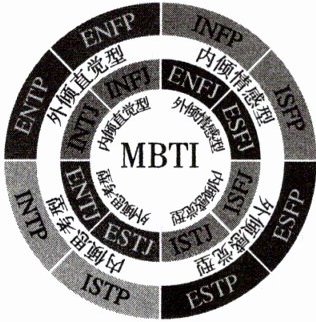三、阅读理解

“Have you done the MBTI personality test?” “Yes, I'm an INTJ,” replied Zheng Qinwen in an interview. Zheng's response (回答) drew people's attention to the test once again.
The Myers - Briggs Type Indicator (MBTI) is a test designed to find out a person's personality type. The test result is based (基于) on four sets of opposite qualities: Extroversion (外向) VS Introversion, Sensing VS Intuition (直觉), Thinking VS Feeling and Judging (判断) VS Perceiving (感知). After answering more than 90 questions, test - takers get their four - letter personality result, including a detailed description. Zheng Qinwen's result of INTJ is one of the 16 possible personality types that the test shows.
Developed by Katharine Cook Briggs and her daughter Isabel Briggs Myers in the US in the 1940s, the test grew to become the standard for personality tests. Many companies and organizations use it to help them choose people for certain positions. And now in China, Internet users are using it as a tool to guide their lives and relationships.
The key problem with the MBTI is that the test is too “black and white” according to the Guardian. The results place people into only one of each of the four types; for example, someone is either an introvert or an extrovert. But many people would surely sit somewhere in the middle of these two. In short, the MBTI only gives a “simplified view (观点) of human personality”, according to the Guardian article. It can only really describe the surface (表面) of who people are. And don't forget that people's behaviour and characteristics also change over time. Tests and tools that help people better understand who they are and how they think are very powerful and can still help in some parts of life. As science and technology (科技) develop, people can look forward to more accurate (准确的) tests that truly show how wonderfully complex (复杂的) and ever - changing humans really are.
(
C
) 1. What does the article tell us about the MBTI?
A. It was developed over 90 years ago.
B. It has been supported by scientists around the world.
C. It divides people into 16 different personality types.
D. It was first created to help companies choose people for certain positions.
(
B
) 2. How can people find out their MBTI personality types?
A. By giving a detailed description.
B. By answering over 90 questions.
C. By reading the Guardian article.
D. By learning about the 16 personality types.
(
D
) 3. What does the underlined word “simplified” in the passage probably mean?
A. Including too many mistakes.
B. Giving many details.
C. Being widely accepted.
D. Being made easier to understand.
(
C
) 4. What is the purpose of writing this article?
A. To find out how to practise MBTI.
B. To explain why MBTI is becoming popular.
C. To introduce the MBTI personality test.
D. To help readers know about their MBTI type.